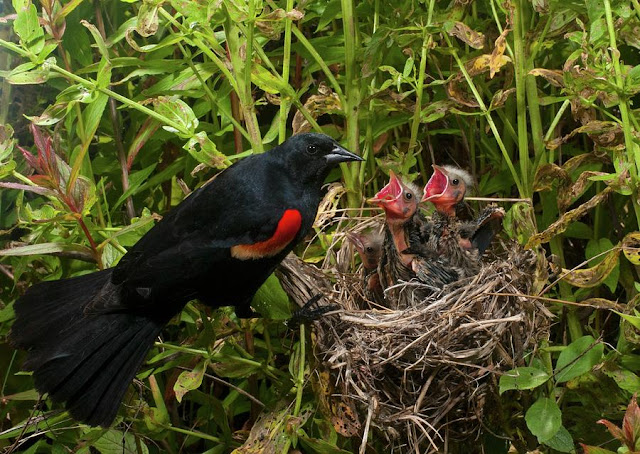Home videos From Egg to Flight: The Story of Red-winged Blackbird Hatchlings
From Egg to Flight: The Story of Red-winged Blackbird Hatchlings
Bird Of The World September 12, 2022 0
The Red-winged Blackbird, with its eye-catching red and yellow shoulder patches and characteristic black plumage, is a common bird found over much of North America. The female Red-winged Blackbird constructs a nest and lays her eggs while the male shows his vividly colored patches to attract a mate during breeding season.
 |
| Red-winged Blackbird Egg Hatching |
An average clutch size for a female Red-winged Blackbird is three to five eggs, which she incubates for about 11 to 14 days. The female spends the most of this time resting on the eggs, keeping them warm and safe. The male helps the female eat while also defending the area surrounding the nest.
When the eggs are ready to hatch, the chicks start to use an egg tooth, a tiny, hard projection on the top of their beaks, to peck their way out of the shells. The female must feed and keep the chicks warm because they are born blind and naked. The mother feeds her young by bringing insects and other small prey back to the nest in her beak.
The chicks' eyes open as they grow and their downy feathers begin to fill up. They get more animated and start to flutter about the nest, fluttering their wings and looking everywhere. While the male assists in protecting the nest from predators, the female continues to take care of the chicks by providing food and keeping them warm. The chicks are prepared to leave the nest and begin independent exploration after around 10 to 14 days. They can fly short distances and start to figure out how to get food on their own. They frequently come back to the nest to roost at night, but they still rely on their parents for safety and direction.
In summary, the development of Red-winged Blackbird chicks is an astonishing process that showcases the intricate habits and adaptations of these incredible birds. The Red-winged Blackbird is a symbol of the wonder and tenacity of the natural world, from the meticulous incubation of the eggs to the feeding and care of the young.





Post a Comment